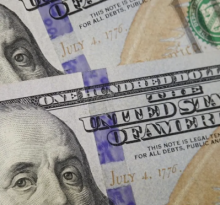China and US-Led Efforts to Replenish Depleted Oil Stocks Expected to Drive Demand

Analysts and traders suggest that a drive to replenish depleted oil stocks, particularly in China, the United States, and Europe, could bolster demand and prices in the coming months. This expectation comes amid tensions in the Middle East, which pose threats to key shipping lanes.
Global oil inventories, heavily depleted due to supply disruptions stemming from sanctions on Russia in mid-2022 and prolonged OPEC+ output cuts, have only marginally recovered. Traders find it challenging to justify the costs associated with storing oil amidst these conditions.
The escalation of attacks by Iran-aligned Houthi rebels in the Red Sea has raised concerns about supply disruptions, prompting buyers to replenish inventories.
Morgan Stanley revised its quarterly forecast for Brent crude prices on Tuesday, projecting an average of $82.50 a barrel for the first and second quarters. This adjustment, up from $80 and $77.50 respectively, indicates the bank anticipates a tighter oil market in 2024.
Consultants FGE noted a significant counter-seasonal decline in crude and fuel stocks this year, amounting to nearly 29 million barrels. This contrasts with the usual average build of 20 million barrels during January in the years 2015-2019.
The International Energy Agency reported that global inventories decreased by 8.4 million barrels in November, the latest month for which complete data is available, marking the lowest level since July 2022. However, preliminary data for December suggested an increase.
Replenishing Oil Inventories: A Restocking Initiative
Traders have noted robust purchasing activity from China, Europe, and the United States thus far.
“Chinese buying is high as it restocks in the first half”, a trader for a European refiner told Reuters. “U.S. and European buying is also stronger this month as the situation for barrels from East of Suez could get much worse at any time.”
The Chinese are heavily buying oil shipments scheduled for arrival this spring to replenish stocks, while the United States is gradually refilling its Strategic Petroleum Reserve after selling a record amount from the government oil stores in 2022.
“In terms of days of demand cover (from oil storage), we expect the market to get to around 67 days by year end 2025 from current 64 days, which is still above pre-pandemic levels of around 60 days, assuming OPEC+ keeps cuts in place through 1H25.” Citi energy strategist Francesco Martoccia told Reuters.
The Organization of the Petroleum Exporting Countries and its allies, including Russia (OPEC+), have been implementing output cuts since 2022 in an effort to stabilize and boost oil prices.
Saudi Arabia’s decision to halt plans to increase its maximum production capacity underscores the commitment of the Organization of the Petroleum Exporting Countries and its allies, including Russia (OPEC+), to stabilize and potentially boost oil prices.
Riyadh’s energy minister suggested on Monday that the decision to halt capacity increases aims to support the energy transition. He emphasized that the kingdom possesses ample spare capacity to mitigate any potential disruptions in the oil market.
Oil prices largely disregarded the decision made late last month, as the strong demand for stock replenishment and an influx of non-OPEC+ oil supply seemed to outweigh Riyadh’s shift in strategy.
“We continue to see a long-term imbalance, with OPEC supply around 2 million bpd too high relative to the implied call on OPEC crude by 2028”, noted HSBC analysts.
In a recent analysis, J.P. Morgan analysts forecasted a potential $10 increase in oil prices by May, contingent upon the absence of geopolitical disruptions and the gradual reintroduction of a combined 400,000 barrels per day by Saudi Arabia and Russia into the market, starting in April.
Risk Warning: CFDs are complex instruments and come with a high risk of losing money rapidly due to leverage. 80.38% of retail investor accounts lose money when trading CFDs with this provider. You should consider whether you understand how CFDs work and whether you can afford to take the high risk of losing your money.






